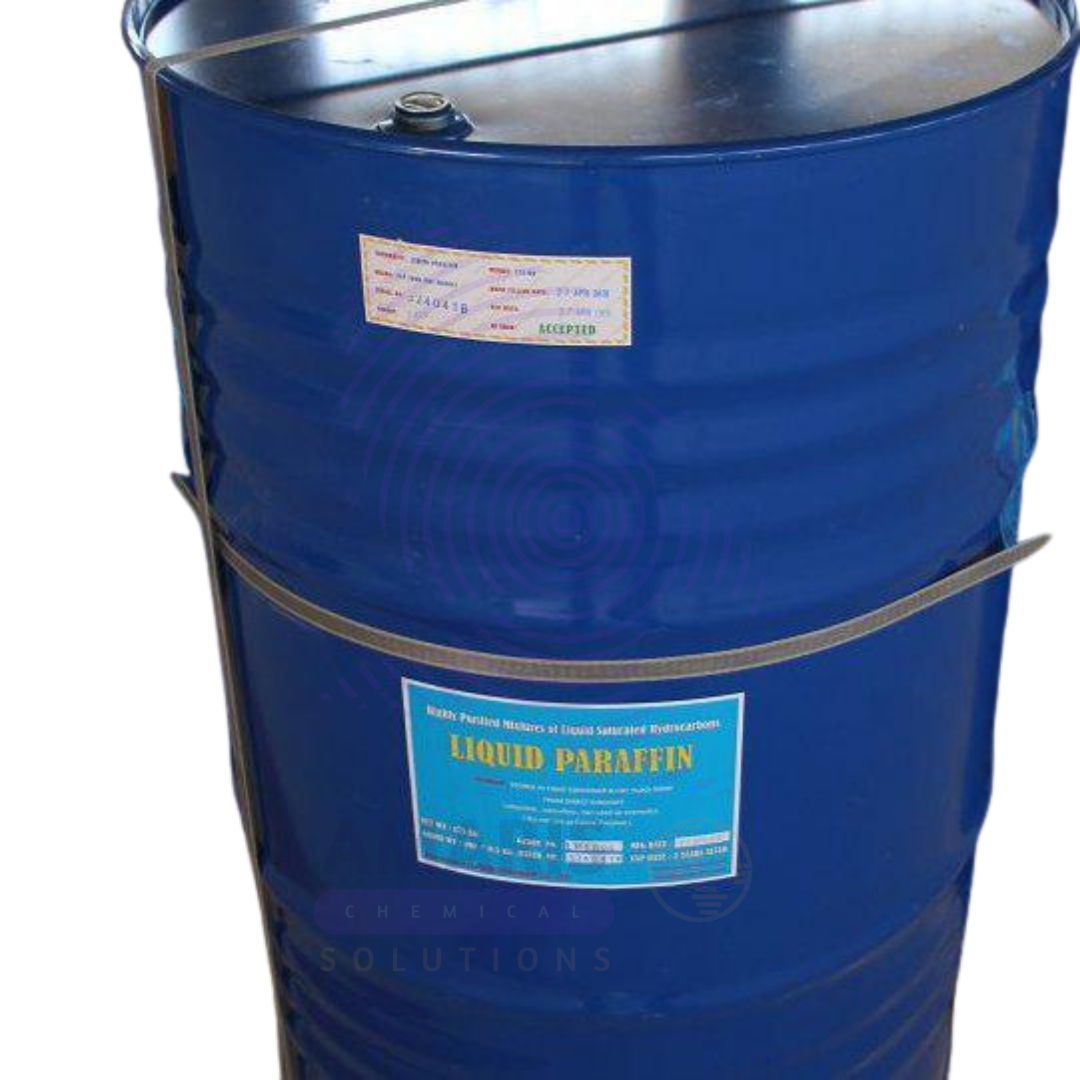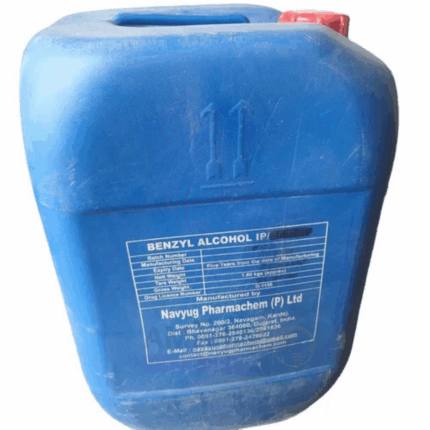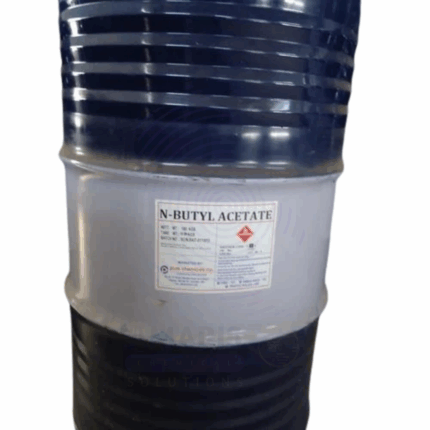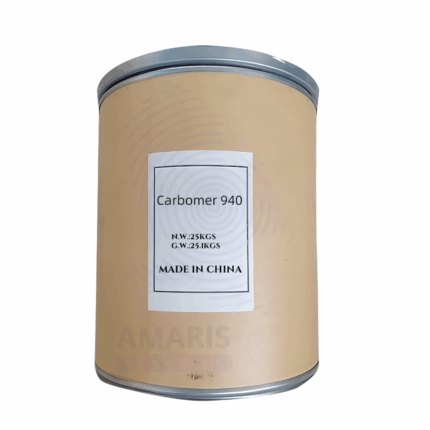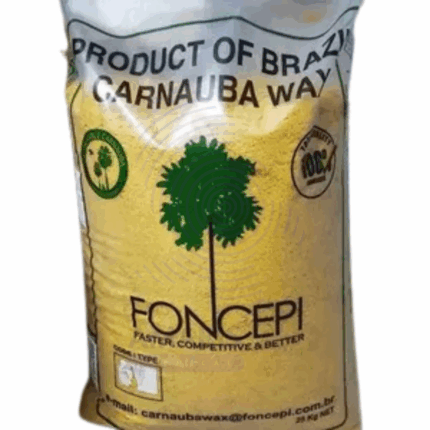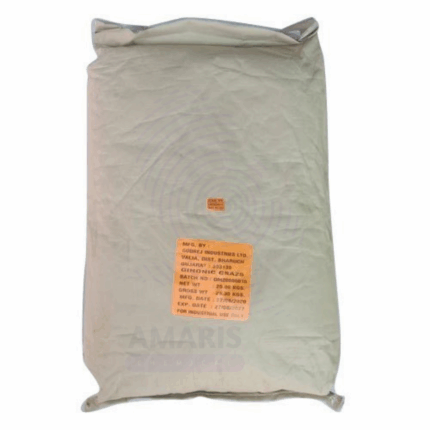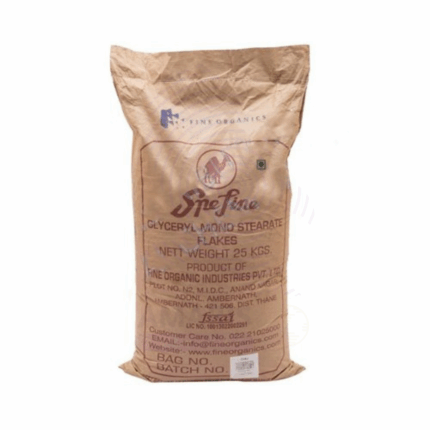Liquid Paraffin
Whatsapp Order
Liquid Paraffin, also known as mineral oil, is a clear, colorless, odorless, and tasteless petroleum-derived liquid hydrocarbon. It is composed primarily of saturated hydrocarbons and is highly refined to meet pharmaceutical and cosmetic grade standards. Liquid Paraffin is widely used for its lubricating, moisturizing, and protective properties. It is non-volatile, chemically stable, and insoluble in water, making it ideal for applications in personal care, pharmaceuticals, and industrial lubrication.
Categories: Emollients, Excipients, Lubricants
Tags: Liquid Paraffin, Lubricant, Mineral Oil Liquid, Paraffin Oil, Pharmaceutical excipient
Description
Table of Contents
Toggle
Liquid Paraffin
Primary Uses
- Pharmaceutical and Medical Applications
- Used as a laxative and stool softener in oral formulations to relieve constipation.
- Acts as a base and carrier in ointments, creams, and other topical medicinal products.
- Utilized in eye drops and other pharmaceutical preparations for lubrication and protection.
- Cosmetic and Personal Care Industry
- Employed as a moisturizer and skin protectant in lotions, creams, baby oils, and makeup removers.
- Acts as a lubricant and emollient in hair care products and massage oils.
- Used in lip balms and other personal care products to prevent moisture loss.
- Industrial Applications
- Functions as a lubricant and coolant in machinery, metalworking, and manufacturing processes.
- Used in textile, printing, and leather industries as a softening and lubricating agent.
- Serves as a release agent and anti-corrosive coating for delicate equipment and tools.
Secondary Uses
- Food Industry
- Used as a release agent and processing aid in food packaging and confectionery manufacturing (where food-grade quality is ensured).
- Electrical Industry
- Utilized as an insulating oil and cooling fluid in electrical transformers and capacitors.
- Household Uses
- Applied as a furniture polish, lubricant for locks and hinges, and protectant for leather goods.
PRODUCT KEY FEATURES
- Basic Identification Attributes
- Chemical Name (IUPAC): Mineral oil (a mixture of alkanes)
- Common/Trade Name: Liquid Paraffin; Mineral Oil; Paraffinum Liquidum
- CAS Number: 8042-47-5
- HS Code: 2710.19.00
- Synonyms: Paraffin oil; White mineral oil; Liquid paraffin
- Physical & Chemical Properties
- Physical State: Clear, viscous liquid
- Color & Odor: Colorless; odorless
- Density: Approximately 0.82 – 0.88 g/cm³
- Solubility: Insoluble in water; soluble in organic solvents
- Flash Point: >150°C (varies by grade)
- Viscosity: Low to moderate, dependent on grade and temperature
- Safety & Hazard Attributes
- GHS Classification: Not classified as hazardous under normal use
- Toxicity: Non-toxic when used as directed; food-grade available for ingestion in limited applications
- Exposure Limits: Not specifically regulated; standard industrial hygiene applies
- Storage & Handling Attributes
- Storage Conditions: Store in a cool, dry, and well-ventilated area away from ignition sources
- Container Type: Food-grade drums, metal or plastic containers
- Shelf Life: Indefinite if stored properly, avoiding contamination
- Handling Precautions: Avoid prolonged skin contact; prevent contamination with dust or other materials
- Regulatory & Compliance Attributes
- Complies with FDA, USP, and other pharmacopeia standards for medical and cosmetic uses
- Meets purity requirements for pharmaceutical and cosmetic applications
- Subject to transportation regulations for flammable liquids depending on grade
- Environmental & Health Impact
- Biodegradability: Poorly biodegradable due to petroleum origin
- Ecotoxicity: Can be harmful to aquatic life if released in large amounts
- Bioaccumulation: Potential for bioaccumulation; avoid environmental discharge
- Carcinogenicity/Mutagenicity: Not classified as carcinogenic in refined grades
SAFETY HANDLING PRECAUTIONS
- Safety Handling Precautions
- PPE Required: Gloves recommended for prolonged handling; safety goggles if splashing risk
- Handling Guidelines: Use in well-ventilated areas; avoid inhalation of vapors or mist
- Storage Measures: Keep containers sealed and away from incompatible materials such as strong oxidizers
- First Aid Measures
- Inhalation: Move to fresh air if respiratory irritation occurs
- Skin Contact: Wash with soap and water; remove contaminated clothing
- Eye Contact: Rinse thoroughly with water for at least 15 minutes; seek medical advice if irritation persists
- Ingestion: Do not induce vomiting; seek medical attention if large quantities ingested
- Firefighting Measures
- Fire Hazards: Combustible liquid; can burn if exposed to flame or high heat
- Extinguishing Media: Use foam, dry chemical, or carbon dioxide extinguishers
- Special Precautions: Avoid inhalation of smoke and fumes; wear full protective gear and self-contained breathing apparatus in fire situations
- Hazardous Combustion Products: Carbon oxides and other irritating vapors
Related products
Carbomer
Carbomer is a high molecular weight, crosslinked polyacrylic acid polymer used primarily as a rheology modifier, thickening agent, and suspension stabilizer. Supplied as a fluffy white powder, it exhibits high viscosity and excellent clarity when neutralized and dispersed in water or alcohol-water systems. Carbomer 940 is widely valued for its ability to form clear gels, control flow properties, and stabilize emulsions. It is commonly used in cosmetics, personal care, pharmaceuticals, and household formulations due to its consistency, compatibility, and efficient thickening performance at low concentrations.
Carnauba Wax Prime Yellow
Carnauba Wax Prime Yellow is a premium grade of natural vegetable wax derived from the leaves of the Copernicia prunifera palm tree, predominantly found in northeastern Brazil. This wax is characterized by its bright yellow color and superior purity, making it highly valued in high-end applications. It features a hard, brittle texture with a high melting point (82–86°C) and a mild, characteristic odor. Carnauba Wax Prime Yellow offers excellent gloss, durability, and water resistance. Its natural origin, combined with exceptional film-forming and emulsifying properties, makes it a preferred choice in cosmetics, food glazing, pharmaceuticals, automotive waxes, and industrial coatings where quality and performance are paramount.
Ceteareth 20 Ginonic CSA 20
Ceteareth 20 Ginonic CSA 20 is a nonionic surfactant and emulsifier derived from the ethoxylation of cetearyl alcohol, incorporating approximately 20 ethylene oxide units per molecule. It appears as a white to off-white waxy solid or viscous liquid, depending on temperature and formulation. This emulsifier is widely used in cosmetic, pharmaceutical, and industrial formulations for its excellent ability to stabilize oil-in-water emulsions, improve texture, and enhance the sensory properties of finished products. Its high hydrophilic-lipophilic balance (HLB) makes it especially effective in forming stable emulsions and solubilizing lipophilic ingredients in aqueous phases. Ceteareth 20 is valued for its mildness, broad compatibility, and multifunctional performance.
Ceto Stearyl Alcohol 1618TA ex VVF
Ceto Stearyl Alcohol 1618TA ex VVF is a premium-grade blend of cetyl (C16) and stearyl (C18) fatty alcohols, produced with high purity and consistent quality by VVF Ltd. This waxy solid is typically supplied as white to off-white flakes or pastilles with a mild fatty odor. Known for its excellent emulsifying, thickening, and emollient properties, it is widely utilized in cosmetics, pharmaceuticals, and industrial formulations. This specific grade from VVF is prized for its uniform particle size, high melting point, and superior performance in enhancing product texture, stability, and skin conditioning effects.
Cetyl Alcohol 98% Flakes
Cetyl Alcohol Flakes is a high-purity fatty alcohol derived mainly from natural sources such as palm oil and coconut oil. Presented as white to off-white waxy flakes, this product contains at least 98% pure cetyl alcohol, ensuring consistent performance and quality. It is valued for its excellent emollient, thickening, and emulsifying properties and is widely used in personal care, pharmaceutical, and industrial formulations. The flake form facilitates easy handling, melting, and dosing in manufacturing processes. Cetyl Alcohol 98% Flakes contributes to the texture, stability, and moisturizing properties of various formulations, providing a non-greasy, smooth finish.
Fish Collagen
Fish Collagen is a natural protein derived from the skin, scales, and bones of various fish species through enzymatic hydrolysis or acid extraction. It is predominantly Type I collagen, known for its excellent bioavailability and biocompatibility. Fish Collagen typically appears as a fine white to off-white powder with low odor and high solubility in water and acidic solutions. It is widely prized in cosmetics, nutraceuticals, pharmaceuticals, and food industries due to its superior absorption compared to mammalian collagen, making it highly effective in skin, joint, and bone health applications. Fish Collagen supports the body’s extracellular matrix, promoting skin elasticity, hydration, and tissue repair.
Glycerol Monostearate Flakes
Glycerol Monostearate Flakes is a white to off-white waxy flake form emulsifier composed of 40% monoglycerides of fatty acids, primarily stearic and palmitic acids, combined with other glycerides and esters. Derived mainly from vegetable oils, this food-grade emulsifier is widely utilized in food, cosmetic, pharmaceutical, and industrial sectors for its multifunctional properties. GMS 40% flakes serve as effective emulsifiers, stabilizers, anti-caking agents, and texture enhancers, with excellent compatibility and versatility in formulations requiring semi-solid or solid fats.
Hydroxyethyl Cellulose
Hydroxyethyl Cellulose , marketed under brand names such as Natrosol, is a non-ionic, water-soluble polymer derived from cellulose by reacting alkali cellulose with ethylene oxide. It appears as a white to off-white, free-flowing powder with excellent thickening, binding, and film-forming properties. HEC is widely used as a rheology modifier and stabilizer due to its high water retention, solubility, and compatibility with a broad range of ingredients. It is valued in many industries including cosmetics, pharmaceuticals, paints, adhesives, and personal care products.


 Preservatives(food)
Preservatives(food) Flavor Enhancers
Flavor Enhancers Acidulants
Acidulants Sweeteners
Sweeteners Antioxidants
Antioxidants Colorants(food)
Colorants(food) Nutraceutical Ingredients (food)
Nutraceutical Ingredients (food) Nutrient Supplements
Nutrient Supplements Emulsifiers
Emulsifiers
 Collectors
Collectors Dust Suppressants
Dust Suppressants Explosives and Blasting Agents
Explosives and Blasting Agents Flocculants and Coagulants
Flocculants and Coagulants Frothers
Frothers Leaching Agents
Leaching Agents pH Modifiers
pH Modifiers Precious Metal Extraction Agents
Precious Metal Extraction Agents
 Antioxidants(plastic)
Antioxidants(plastic) Colorants (Pigments, Dyes)
Colorants (Pigments, Dyes) Fillers and Reinforcements
Fillers and Reinforcements Flame Retardants
Flame Retardants Monomers
Monomers Plasticizers
Plasticizers Polymerization Initiators
Polymerization Initiators Stabilizers (UV, Heat)
Stabilizers (UV, Heat)
 Antifoaming Agents
Antifoaming Agents Chelating Agents
Chelating Agents Coagulants and Flocculants
Coagulants and Flocculants Corrosion Inhibitors
Corrosion Inhibitors Disinfectants and Biocides
Disinfectants and Biocides Oxidizing Agents
Oxidizing Agents pH Adjusters
pH Adjusters Scale Inhibitors( water)
Scale Inhibitors( water)
 Antioxidants(cosmetic)
Antioxidants(cosmetic) Emollients
Emollients Fragrances and Essential Oils
Fragrances and Essential Oils Humectants
Humectants Preservatives
Preservatives Surfactants(cosmetic)
Surfactants(cosmetic) Thickeners
Thickeners UV Filters
UV Filters
 Fertilizers
Fertilizers Soil Conditioners
Soil Conditioners Plant Growth Regulators
Plant Growth Regulators Animal Feed Additives
Animal Feed Additives Biostimulants
Biostimulants Pesticides (Herbicides, Insecticides, Fungicides)
Pesticides (Herbicides, Insecticides, Fungicides)
 Active Pharmaceutical Ingredients (APIs)
Active Pharmaceutical Ingredients (APIs) Excipients
Excipients Solvents(pharmaceutical)
Solvents(pharmaceutical) Antibiotics
Antibiotics Antiseptics and Disinfectants
Antiseptics and Disinfectants Vaccine Adjuvants
Vaccine Adjuvants Nutraceutical Ingredients (pharmaceutical)
Nutraceutical Ingredients (pharmaceutical) Analgesics & Antipyretics
Analgesics & Antipyretics
 Analytical Reagents
Analytical Reagents Solvents(lab)
Solvents(lab) Chromatography Chemicals
Chromatography Chemicals Spectroscopy Reagents
Spectroscopy Reagents microbiology-and-cell-culture-reagents
microbiology-and-cell-culture-reagents Molecular Biology Reagents
Molecular Biology Reagents Biochemical Reagents
Biochemical Reagents Inorganic and Organic Standards
Inorganic and Organic Standards Laboratory Safety Chemicals
Laboratory Safety Chemicals Specialty Laboratory Chemicals(Special Laboratory Equipment)
Specialty Laboratory Chemicals(Special Laboratory Equipment)
 Demulsifiers
Demulsifiers Hydraulic Fracturing Fluids
Hydraulic Fracturing Fluids Scale Inhibitors(oil)
Scale Inhibitors(oil) Surfactants(oil)
Surfactants(oil) Drilling Fluids
Drilling Fluids
 Dyes and Pigments
Dyes and Pigments Bleaching Agents
Bleaching Agents Softening Agents
Softening Agents Finishing Agents
Finishing Agents Antistatic Agents
Antistatic Agents
 Admixtures
Admixtures Waterproofing Agents
Waterproofing Agents Sealants and Adhesives
Sealants and Adhesives Curing Compounds
Curing Compounds Concrete Repair Chemicals
Concrete Repair Chemicals Anti-Corrosion Coatings
Anti-Corrosion Coatings
 Surfactants(cleaning)
Surfactants(cleaning) Builders
Builders Enzymes
Enzymes Solvents (Cleaning)
Solvents (Cleaning) Fragrances
Fragrances
 Electronic Chemicals
Electronic Chemicals Catalysts
Catalysts Lubricants
Lubricants Photographic Chemicals
Photographic Chemicals Refrigerants
Refrigerants Automotive chemicals
Automotive chemicals Pyrotechnic Chemicals
Pyrotechnic Chemicals
 Biodegradable Surfactants
Biodegradable Surfactants Bio-based Solvents
Bio-based Solvents Renewable Polymers
Renewable Polymers Carbon Capture Chemicals
Carbon Capture Chemicals Wastewater Treatment Chemicals
Wastewater Treatment Chemicals
 Pigments
Pigments Solvents(paint)
Solvents(paint) Specialty Coatings
Specialty Coatings Binders/Resins
Binders/Resins Additives
Additives Driers
Driers Anti-Corrosion Agents
Anti-Corrosion Agents Functional Coatings
Functional Coatings Application-Specific Coatings
Application-Specific Coatings
 Fresh Herbs
Fresh Herbs Ground Spices
Ground Spices Whole Spices
Whole Spices Spice Blends
Spice Blends Dried Herbs
Dried Herbs
 Leavening Agents
Leavening Agents Dough Conditioners
Dough Conditioners Flour Treatments
Flour Treatments Fat Replacers
Fat Replacers Decoratives
Decoratives Preservatives(baking)
Preservatives(baking)
 Plasticizers & Softeners
Plasticizers & Softeners Reinforcing Agents
Reinforcing Agents Adhesion Promoters
Adhesion Promoters Vulcanizing Agents
Vulcanizing Agents Antidegradants
Antidegradants Blowing Agents
Blowing Agents Fillers & Extenders
Fillers & Extenders Accelerators & Retarders
Accelerators & Retarders